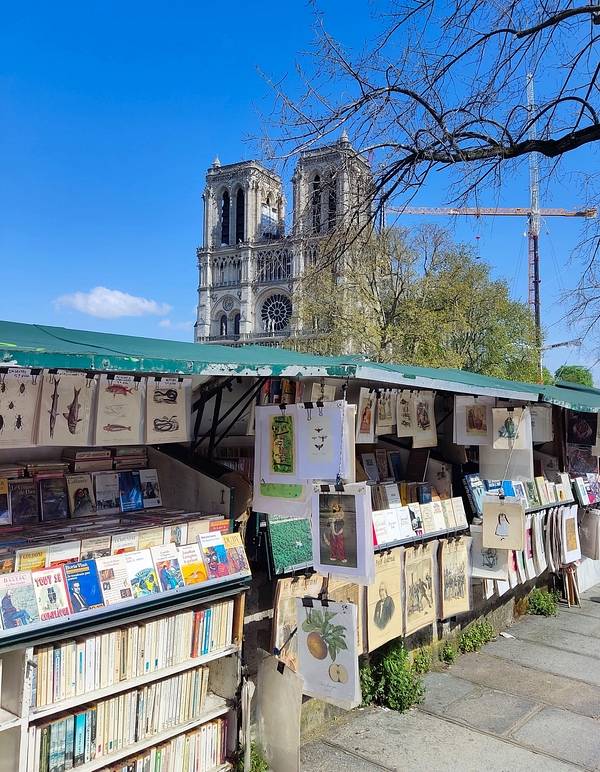A Timeless Tradition
Bouquinistes have graced the banks of the Seine for centuries, seamlessly blending into Parisian backdrop. If these little green book stalls were to vanish, we would realize just how much they contribute to the vibrant tapestry of Parisian life. They are, without a doubt, one of the city’s most iconic yet often overlooked features.
The term “bouquiniste” made its dictionary debut in 1752, referring to sellers of used books. However, this profession predates the term itself. A 1680 dictionary introduced the word “étaleur,” designating “poor booksellers who spread out their wares on the edges of the Pont Neuf.” But why the Pont Neuf? Bridges back then were not just bridges they served as prime real estate for housing and boutiques. The old bridges were made out of wood, and now, with hindsight, we can see that lining each side of a bridge with back-to-back buildings was not structurally sound... and poof! They all eventually collapsed. This brings us back to Pont Neuf, at the time, it was unique—one of the only bridges free of housing and shops.
The Bouquinistes' Role in Parisian Culture
Even during challenging times, the bouquinistes played a vital role in ensuring access to literature. During the French Revolution, only a select few newspapers and handouts were publicly available, so those of literary minds quenched their thirst to read and collect antique books by paying a little visit to their friendly open-air booksellers. The profession continued to grow as the quai was constructed along the river and more space was available to accommodate the merchants and their books. It was finally in 1891 when the city of Paris decreed that the bouquinistes were an integral part of Parisian culture and should be allowed to leave their merchandise on site bringing about the birth of the symbolic green stalls that we all know and cherish!

Bouquinistes do not pay tax nor rent but they must comply with strict regulations of the boxes they occupy. Their permits are valid for five years whereby they must be open at least four days a week (except in bad weather). Booksellers are responsible for maintaining the four boxes they operate, and the main portion of their sales should come from books, antique papers, or prints. In one of their four boxes, they are allowed to sell coins, postcards, stamps, and other souvenirs.
A UNESCO Heritage Site
They have become such a fundamental part of the city that they were declared a UNESCO World Heritage site in 1992! Whether you’re two lovebirds living out your romantic movie, friends perusing the quay for that perfect evening apéro, or just on a promenade… don’t forget to give the bouquinistes a little love. A simple “un petit bonjour” might lead you to the perfect souvenir to take home.
As the saying goes, the Seine is “the only river in the world that runs between two bookshelves.”

Photo credit Paris.fr
Explore Paris’s Literary Gems
For those looking to dive deeper into this literary treasure hunt, follow the City of Paris’ map showcasing all the bouquiniste boxes. Along the way, you’ll encounter notable attractions such as the Louvre, Saint-Michel Fountain, Pont des Arts, Notre-Dame Cathedral, and more!

